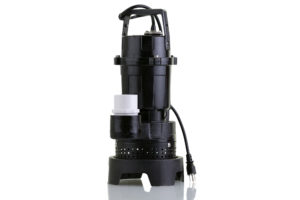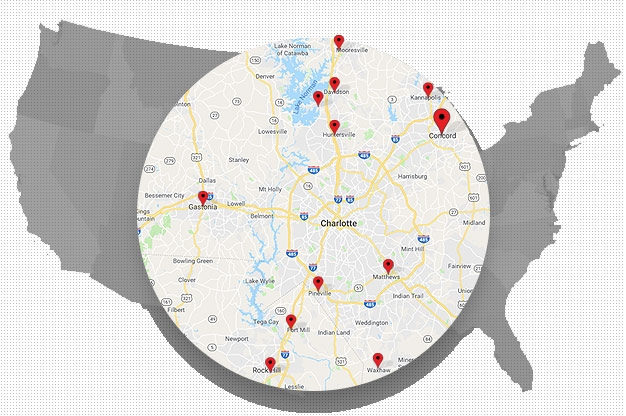8 Signs That You Need a Sump Pump Replacement

Sump pumps help keep your basement or crawlspace dry and remove moisture. Having a water-free basement or crawlspace helps prevent your home from being flooded. Moreover, it reduces the risk of health issues due to stagnant water and moisture in the air.
Keeping this in mind, it’s important to make sure your sump pump is in working order. Below we’ll review eight different reasons you may need a sump pump replacement.
1. The Sump Pump Isn’t Running
If there’s water in the pit (aka sump basin) it means your sump pump isn’t turning on when it should. There are many reasons your sump pump may not be turning on. These can include:
- The float valve/switch isn’t operational (it may be stuck)
- The float mechanism is broken
- There could be a loose electrical connection (check to see if the pump is getting power)
- Plug another item into the outlet to see if it’s an issue with the outlet and not the pump
- It could also be an issue with the internal wiring inside of the pump
- A breaker/fuse could have tripped
- The motor may have burned out
- This results when water isn’t able to escape when the hose becomes frozen during the colder months
- The impeller may be jammed
- Your pump is old
2. It Makes Strange Sounds and/or Vibrates
If you hear loud or strange sounds (e.g. grinding or rattling), your motor may not be functioning properly. Alternately, there may be damaged parts in your pump. If it has always made strange sounds, the sump pump may not have been installed correctly the first time.
Another option could be that your sump pump is old and needs replacing.
Damaged parts can also lead to excessive vibrating in your sump pump. This vibration can create more problems in the future, causing more damage to the unit.
For example, sump pumps will suck up debris in the water, which can bend the impeller. This will cause the pump to make strange sounds and vibrate.
3. It’s Constantly Running
A sump pump should not be running at all times unless there is always a high enough amount of water in the pit. If that is the case, you may want a more powerful sump pump. Your current one isn’t removing water fast enough to keep the water from constantly building up.
It could be an issue with the position of the pump, it may not be able to properly remove all the water.
You may also need to make sure the float switch isn’t jammed/clogged so that it can properly turn off when needed. The float switch regulates when the pump will turn on and off.
If the float valve is broken the pump won’t properly remove all the water but instead bring it back. The pump will keep running to try to remove the water even though it can’t.
4. It’s Old
Sump pumps tend to last up to 10 years. If your pump is around this age, it may be time to replace it.
If you live in an area that sees a lot of precipitation, that means your pump will be working even harder. Your pump may only last around seven years instead.
5. It Cycles Erratically
When your pump isn’t cycling properly it’s either coming on in short bursts or it’s taking too long to remove the water.
This could be an issue with your float switch being broken or the float valve being too low. When the valve is too low it could be immersed in a small amount of water causing the cycle to start up briefly. Moreover, it could be a wiring issue in the mechanism or an electrical problem with the outlet or breaker.
6. Clogged Pump
Debris flows into the intake of the sump pump, so when it gets clogged over time, it’s no surprise. If that debris makes its way into the pump, it can damage the impeller fan.
The pump line/hose can be clogged (with sediment or debris) or frozen/obstructed by ice (when it’s below freezing out). When your sump pump is clogged, water will return to the pit and may eventually flood your basement.
7. There’s No Water in the Pit
If your pump is still running but there is no water in the pit you know there is an issue.
Generally, this happens because the pump wasn’t installed correctly. It could also mean it was never connected to the drainage system. In some instances, there is a clog in the sump pump.
If this is happening, your pump won’t be able to protect your home or yard from flooding.
8. Your Home Is in a Low-Lying or Flat Area
If you get a lot of precipitation and you live in a flat and/or low-lying area water is likely to enter your home. Once the soil in your yard can’t hold any more water it’s going to enter your home. On top of that, if your yard has a lot of clay, there is nowhere for the precipitation to go but toward your house.
What’s more, there could be an underground spring in your yard or under your house and you’re not aware of it.
Do You Need a Sump Pump Replacement?
Now that you know the warning signs, it’s time to check if you need a sump pump replacement. Flooding can cause damage to your home, leading to higher repair costs. What’s worse, water that sits in your home can cause health issues to you and your loves ones.
Review our blog if you want to learn everything you can about sump pumps.
Recent Posts
- How Crawl Space Encapsulation Benefits the Environment – An Expert Guide
- 6 Ways Professionals Keep Your Crawl Space in Top Shape
- Structural Repair Solutions for Crawl Spaces, Basements, and Foundations
- Essential Crawl Space Repair Tips Every Homeowner Should Know
- The Importance of Radon Mitigation: Ensuring a Safe Living Environment for Homeowners
Categories
- Basement Mold
- Basement Waterproof Foundation
- Basement Waterproofing
- Crawl Space Dehumidifier
- Crawl Space Encapsulation Cost
- Crawl Space Repair
- Crawl Space Waterproofing
- Encapsulation
- Foundation Repair
- Foundation Waterproofing
- French Drains
- Leaky Basement
- Mold Remediation
- Mold Removal
- Radon
- Slab Jacking
- Sump Pump
- Uncategorized
- Vapor Barrier
- Water Leak
- Waterproofing
- White Mold
Archives
- June 2024
- May 2024
- March 2024
- January 2024
- June 2023
- May 2023
- April 2023
- March 2023
- February 2023
- January 2023
- December 2022
- November 2022
- October 2022
- September 2022
- August 2022
- July 2022
- June 2022
- May 2022
- March 2022
- February 2022
- January 2022
- December 2021
- November 2021
- October 2021
- September 2021
- August 2021
- July 2021
- June 2021
- May 2021
- April 2021
- March 2021
- February 2021
- January 2021
- December 2020
- November 2020
- October 2020
- September 2020
- August 2020
- July 2020
- June 2020
- May 2020
- April 2020
- March 2020
- February 2020
- January 2020
- December 2019
- November 2019
- October 2019
- September 2019
- August 2019
- July 2019
- June 2019
- May 2019

